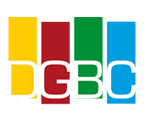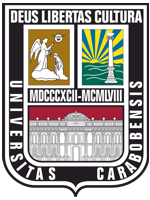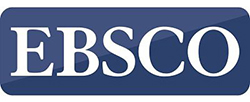El trabajo educativo de los estudiantes en las instituciones de educación superior: una vertiente innovadora
DOI:
https://doi.org/10.46502/issn.1856-7576/2025.19.01.6Palabras clave:
enfoques innovadores, sistema educativo, instituciones de educación superior, tecnologías educativas innovadoras, tecnologías de Internet, entorno educativo integradoResumen
El artículo analiza el sistema innovador de trabajo educativo en una institución educativa y propone enfoques innovadores para mejorar el sector educativo. El propósito del artículo es revelar el componente innovador en el sistema educativo de las instituciones educativas y verificar experimentalmente la efectividad e importancia del sistema innovador de asistencia educativa en las instituciones de educación superior para la educación. La base metodológica del estudio se presenta en cuatro niveles jerárquicamente subordinados: filosófico, científico general, específicamente científico y tecnológico. Se han desarrollado los elementos estructurales del sistema innovador de asistencia educativa de una institución educativa, sus componentes y las principales vías de profesionalización. Destaquemos los principales principios innovadores de la enseñanza en las instituciones educativas. Se destacan los principales principios y métodos innovadores de enseñanza en las instituciones educativas. Se realizó un estudio experimental para confirmar la efectividad e importancia de un sistema innovador de trabajo educativo en las instituciones de educación superior para la educación. Como resultado del experimento, los cambios positivos permiten hablar de un aumento en el nivel de aprendizaje de los estudiantes.
Citas
Calvopiña Moncayo, J., Hallo Vargas, J., Solis Cartas, U., Expósito Lara, A., Valdés González, J., & García Ríos, C. (2022). Rol de la atención psicopedagógica en el sistema educativo. Revista Cubana de Reumatología, 24(4), e331. Recuperado de https://revreumatologia.sld.cu/index.php/reumatologia/article/view/1074
Dubasenyuk, O. A. (2021). Technologies of professional and pedagogical training of future teachers in the field of educational care. In Innovative educational technologies in the theory and practice of modern education: coll. the mother science and practice conference (pp. 13-16). Kyiv. http://eprints.zu.edu.ua/34583/1/Дубасенюк%20Збірник-жовт-2020.pdf
Dubasenyuk, O.A. (2014). Study of educational and educational systems in pedagogic science of the 20th century. In Professional pedagogical education: formation and development of pedagogical knowledge: monograph (pp. 209-228). Zhytomyr: Publication of ZhDU named after I. Franko. http://eprints.zu.edu.ua/12991/1/9.pdf
Gladush, V. A., & Lysenko, G. I. (2014). Higher school pedagogy: theory, practice, history: tutorial. "Royal Print" LLC. https://lib.iitta.gov.ua/id/eprint/720498/2/3-Гладуш%20В.А.%20Педагогіка%20вищої%20школи%202014_.pdf
Kondrashova, L.V., Lavrentyeva, O.O., & Zelenkova, N.I. (2008). The method of organizing educational care in a modern school: a study guide. Kryvyi Rih: KDPU. https://elibrary.kdpu.edu.ua/bitstream/0564/2010/1/Vihovna-robota-v-shkoli-formi-zahodiv.pdf
Kovalchuk, V., & Shcherbak, A. (2018). Implementation of innovative learning technologies in the process of professional training of students of higher education institutions. Young Scientist, 3(2), 543-547. http://nbuv.gov.ua/UJRN/molv_2018_3%282%29__34
Krasnoschok, I. (2019). Peculiarities of the system of educational care in a higher educational institution. Scientific notes, 93, 83-88. https://dspace.cusu.edu.ua/server/api/core/bitstreams/214f50f5-056a-45d2-b69c-9ea34c554137/content
Matsenko, L.M. (2019). Theory and methods of education: a study guide. Kyiv: CPU "Comprint". https://dglib.nubip.edu.ua/server/api/core/bitstreams/46819f9b-f29f-4738-95c7-0a086e1954a1/content
Ortynsky, V.L. (2009). Pedagogy of high school: study guide for students of higher educational institutions. Kyiv: Center of educational literature. https://library.udpu.edu.ua/library_files/6383_01.pdf
Panasiewicz, R. (2020). Care and knowledge: Human formation and dialogical relationship in educational environments. Horizonte – Revista de Estudos de Teologia e Ciências da Religião, 18(55), 174–196. https://doi.org/10.5752/P.2175-5841.2020v18n55p174
Pertile, E. B., & Rossetto, E. (2015). Trabalho e formação docente para o atendimento educacional especializado. Revista Ibero-Americana De Estudos Em Educação, 10(4), 1186–1198. https://doi.org/10.21723/riaee.v10i4.6219
Popadych, O. (2017). Theoretical foundations of educational care with future teachers of a higher school in a higher educational institution. Scientific Bulletin of Uzhhorod University, 2(41), 206-209. http://nbuv.gov.ua/UJRN/Nvuuped_2017_2_53
Shetelya, N., Oseredchuk, O., Cherkasov, V., Kravchuk, O., Yarova, L., & Kuchai, O. (2023). Competency approach in preparing professionals in an innovative educational environment in higher education. Revista Conrado, 19(S3), 298-307. https://conrado.ucf.edu.cu/index.php/conrado/article/view/3512
Silva, W. A. (2022). Trabalho educativo, tecnologias educacionais e formação humana. Revista Ibero-Americana De Estudos Em Educação, 17(esp.1), 0781–0794. https://doi.org/10.21723/riaee.v17iesp.1.15880
Tretko, V.V. (2011). Modern trends of innovative development of the system of higher education in Ukraine. Scientific Bulletin of Uzhgorod University, 23, 186–188. http://nbuv.gov.ua/UJRN/Nvuuped_2011_23_66
Tverdokhlib, T.S. (2017). Pedagogical mastery of the class teacher in the organization of educational care: educational and methodological manual. Kharkiv: H.S. Skovoroda KhnPU. https://dspace.hnpu.edu.ua/server/api/core/bitstreams/bfd72bef-eb9a-4ffa-bcbd-b14959ea03ae/content
Vorozhbit-Gorbatyuk, V., & Khizhnyak, I. (2022). Partnership as an indicator of the effectiveness of educational care in an educational institution. Youth and the market, 5(203), 41-45. https://doi.org/10.24919/2308-4634.2022.230497
Descargas
Publicado
Cómo citar
Número
Sección
Licencia
Derechos de autor 2025 Oleksandr Bosyi, Liudmyla Levytska, Lidiia Cherednyk, Iryna Protsenko, Svitlana Yeldinova

Esta obra está bajo una licencia internacional Creative Commons Atribución 4.0.















